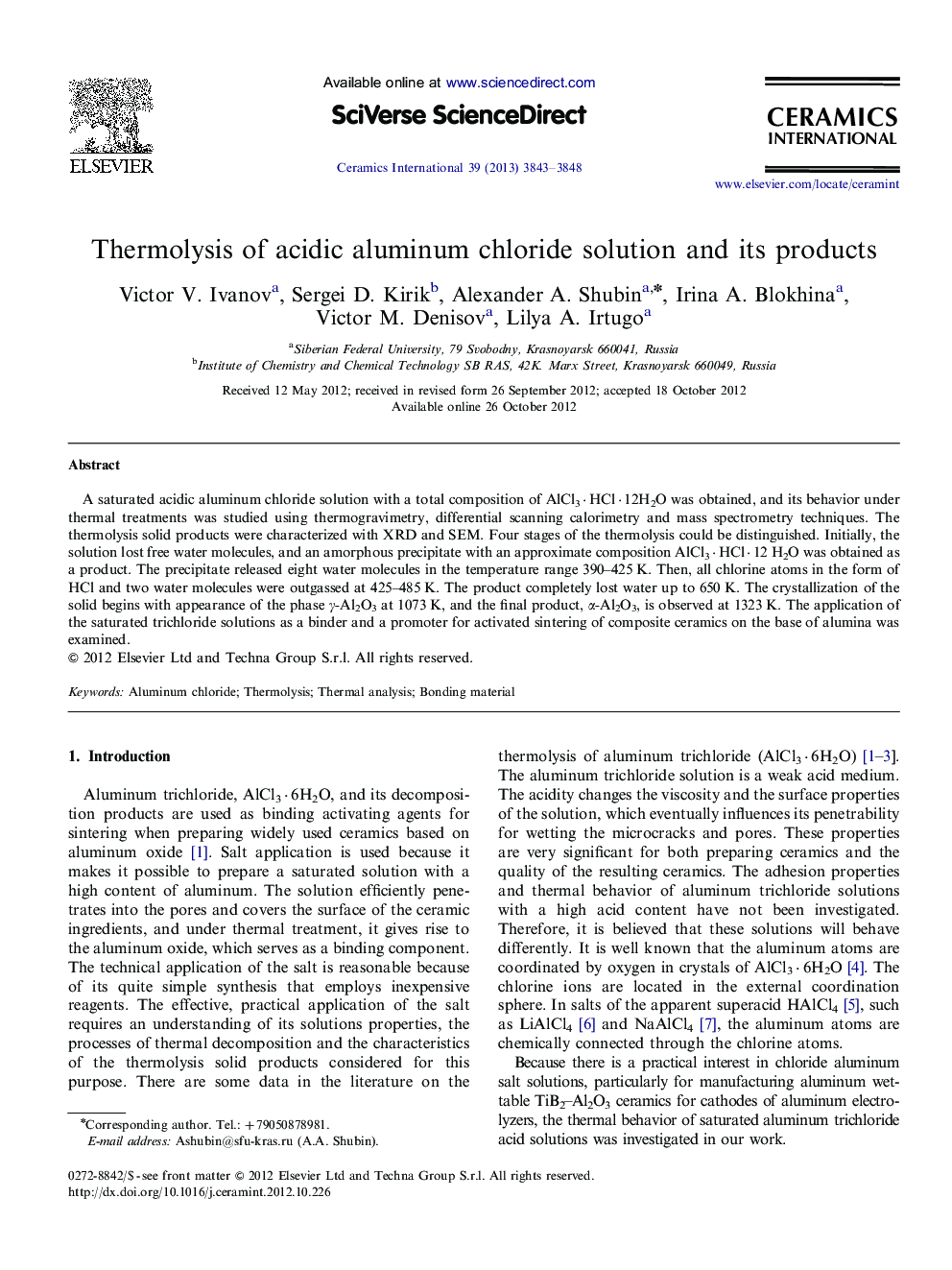| Article ID | Journal | Published Year | Pages | File Type |
|---|---|---|---|---|
| 1461753 | Ceramics International | 2013 | 6 Pages |
A saturated acidic aluminum chloride solution with a total composition of AlCl3·HCl·12H2O was obtained, and its behavior under thermal treatments was studied using thermogravimetry, differential scanning calorimetry and mass spectrometry techniques. The thermolysis solid products were characterized with XRD and SEM. Four stages of the thermolysis could be distinguished. Initially, the solution lost free water molecules, and an amorphous precipitate with an approximate composition AlCl3·HCl·12 H2O was obtained as a product. The precipitate released eight water molecules in the temperature range 390–425 K. Then, all chlorine atoms in the form of HCl and two water molecules were outgassed at 425–485 K. The product completely lost water up to 650 K. The crystallization of the solid begins with appearance of the phase γ-Al2O3 at 1073 K, and the final product, α-Al2O3, is observed at 1323 K. The application of the saturated trichloride solutions as a binder and a promoter for activated sintering of composite ceramics on the base of alumina was examined.
